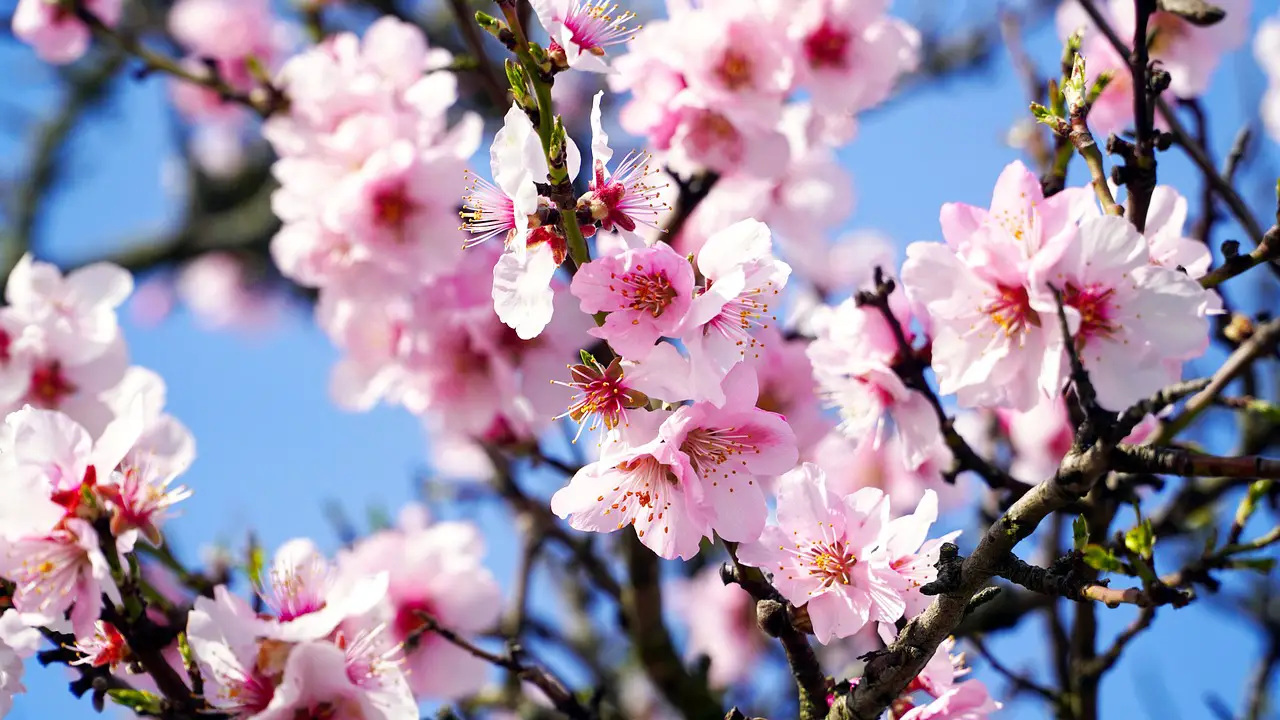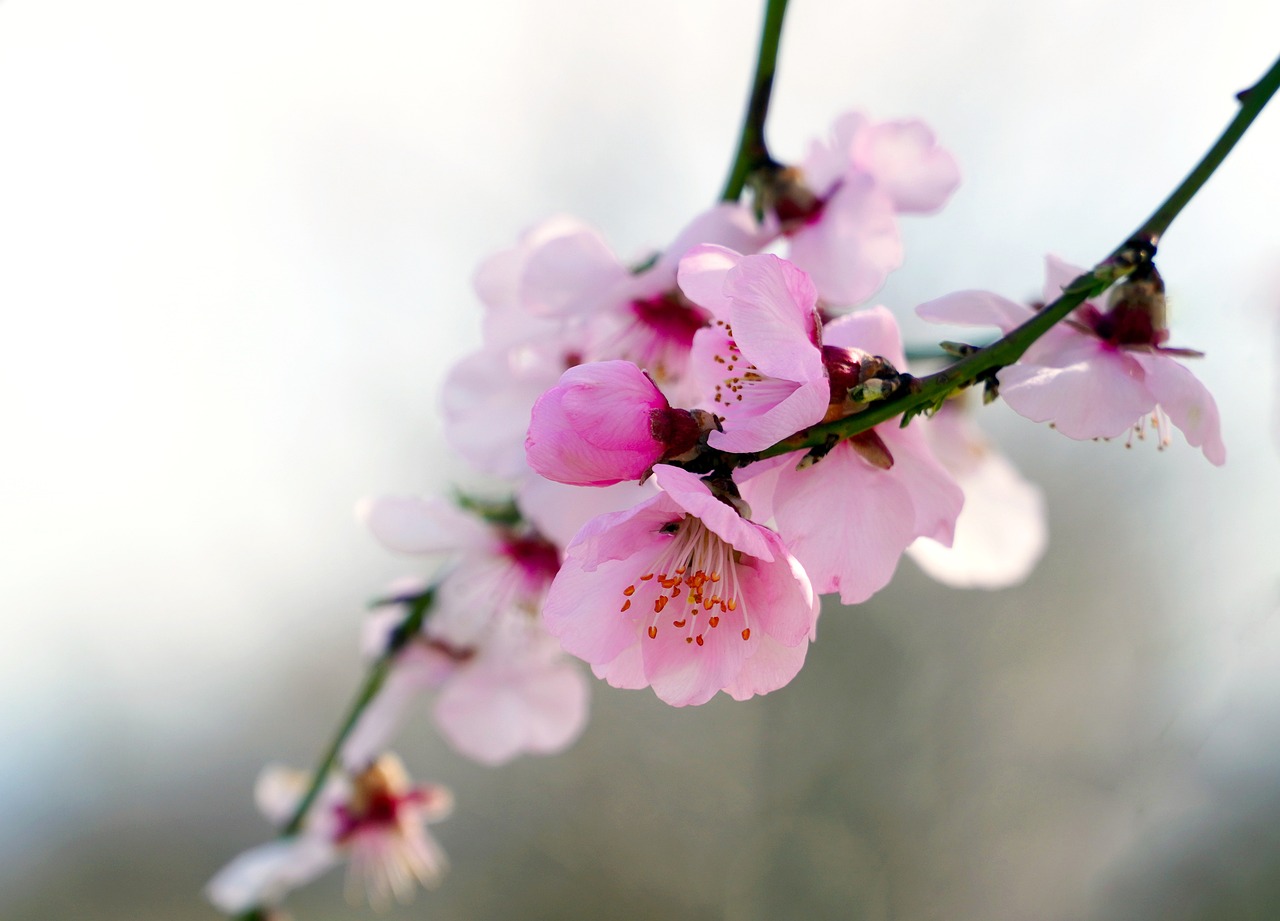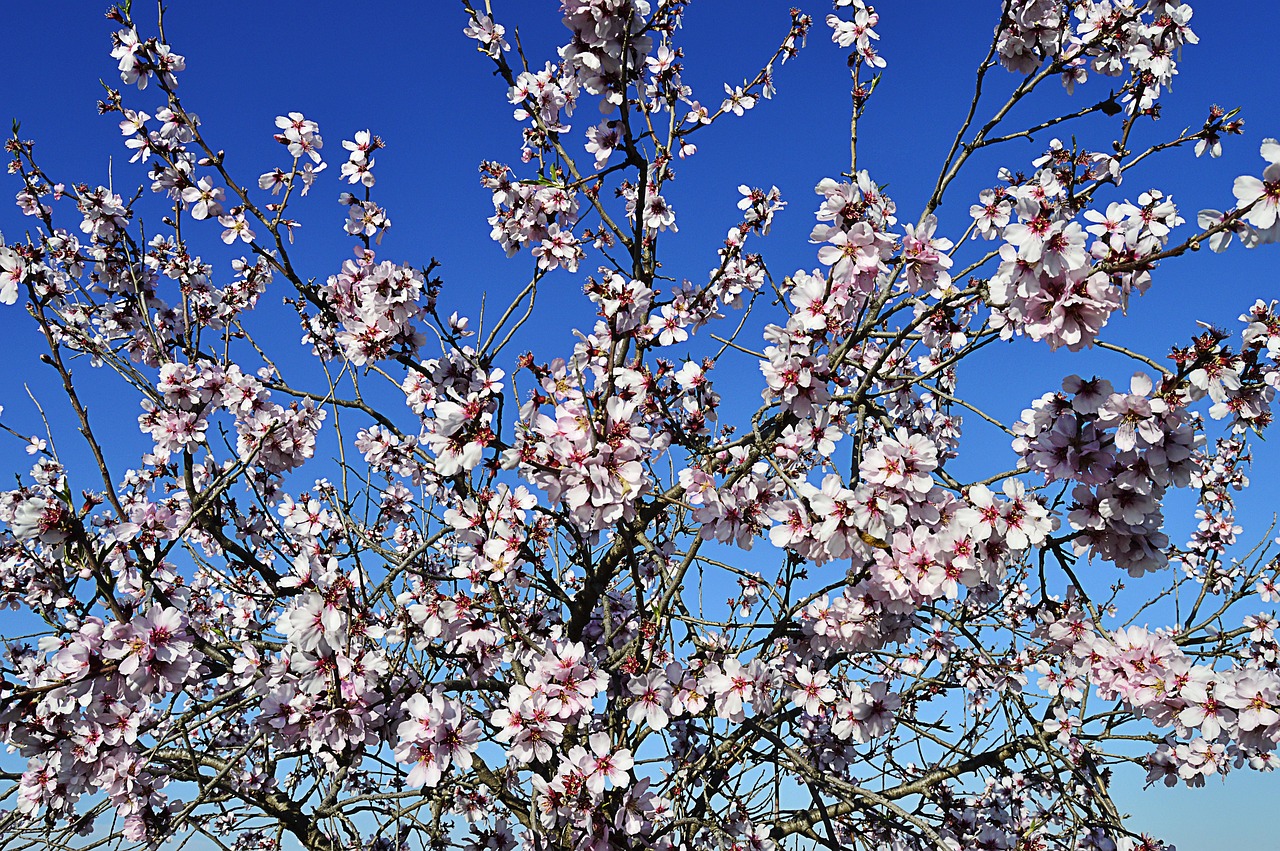Pruning almond trees is essential for sustainable farming practices. It enhances tree health, increases yield, and improves fruit quality. Proper pruning techniques also help in managing pests and diseases, ultimately leading to more resilient almond orchards.
Almond trees are popular in many regions due to their valuable nuts and beautiful blossoms. However, these trees require careful management to thrive. One of the most important practices in almond cultivation is pruning. This technique is not only vital for maintaining tree shape but also plays a significant role in ensuring the long-term health of the trees.

Pruning involves removing specific parts of the tree, such as branches or shoots. This process promotes better air circulation and sunlight penetration, which are crucial for the tree’s growth and productivity. Additionally, pruning helps in minimizing disease risk by removing dead or infected wood. Sustainable farming practices focus on maintaining ecological balance while optimizing production. Pruning fits perfectly into this framework.
Benefits of Pruning Almond Trees
When it comes to almond trees, pruning offers several key advantages that contribute to sustainable farming methods. Understanding these benefits is essential for any almond grower looking to implement effective management strategies.
- Improved Air Circulation: Pruning allows air to flow freely through the canopy, reducing humidity levels and the risk of fungal diseases.
- Increased Sunlight Exposure: By removing excess branches, sunlight can reach more parts of the tree, enhancing photosynthesis and fruit development.
- Enhanced Tree Structure: Regular pruning helps maintain a strong structure, preventing breakage during storms or heavy fruit loads.
- Higher Yields: Properly pruned trees tend to produce more nuts due to better nutrient allocation and improved overall health.
- Reduced Pest Issues: Thinning the canopy can deter pests by making it harder for them to find shelter.
In addition to these benefits, pruning can influence the overall management of almond orchards. It is essential to adopt a systematic approach when pruning to maximize these advantages. This includes understanding the best times and methods for pruning to ensure optimal results.

Understanding Pruning Techniques
There are various techniques used in pruning almond trees. Each method has its specific purpose and should be chosen based on the desired outcome. Here are some common techniques:
- Thinning: This involves removing entire branches from the base to improve light penetration and air circulation.
- Heading Back: Shortening branches encourages new growth and helps maintain the desired tree height.
- Canopy Management: Adjusting the canopy shape allows for better sunlight distribution across all parts of the tree.
Choosing the right technique depends on various factors such as tree age, health, and specific goals for the orchard. It’s crucial to assess each tree individually before deciding on a pruning method.
Timing for Pruning Almond Trees
The timing of pruning is just as important as the techniques used. Pruning at the wrong time can lead to damage or reduced yields. Generally, the best time to prune almond trees is during the dormant season, which typically occurs late winter to early spring. This timing allows for optimal healing as the tree prepares for new growth.

Some almond growers prefer to prune immediately after harvest in late summer or early fall. However, this method can expose trees to potential damage from winter weather if not done carefully. It is crucial to consider local climate conditions when determining the best time for pruning.
| Pruning Time | Description | Benefits |
|---|---|---|
| Dormant Season | Late winter to early spring | Promotes healing before new growth starts |
| Post-Harvest | Late summer to early fall | Clears dead wood before winter but risks cold damage |
Proper timing ensures that almond trees remain healthy and productive while minimizing stress and potential damage from environmental factors. Growers must remain vigilant and adjust their practices based on weather patterns and tree performance.
Incorporating sustainable farming practices into almond cultivation, especially through proper pruning techniques, can lead to healthier crops and enhanced yields. As farmers prioritize environmental stewardship, understanding these methods becomes increasingly important for success in almond farming.

Common Mistakes in Pruning Almond Trees
While pruning is essential for the health of almond trees, many growers make common mistakes that can hinder tree development. Recognizing these errors can help farmers adopt better practices and improve their almond production. Below are some typical pruning mistakes to avoid:
- Pruning Too Much: Removing excessive branches can stress the tree and reduce yield. It is essential to prune selectively.
- Ignoring Tree Structure: Pruning without considering the tree’s natural shape can lead to weak branches and poor fruiting.
- Inconsistent Timing: Pruning at different times each year can confuse the tree’s growth cycle, leading to irregular fruit production.
- Using Dull Tools: Blunt tools can cause jagged cuts, which may hurt the tree and increase the risk of disease.
- Neglecting Sanitation: Failing to clean tools can spread diseases between trees, impacting overall orchard health.
Awareness of these common pitfalls is crucial for successful pruning. By taking a more informed approach, almond growers can enhance the effectiveness of their pruning practices.
Tools for Pruning Almond Trees
Having the right tools is essential for effective pruning. Using high-quality equipment ensures clean cuts, reduces damage, and minimizes stress on the trees. Here are some commonly used tools for pruning almond trees:
- Hand Pruners: Ideal for cutting small branches and making precise cuts. Look for sharp, ergonomic designs.
- Loppers: Useful for larger branches that are too thick for hand pruners. They provide extra leverage.
- Saws: For cutting thicker branches, a pruning saw is necessary. Choose one with a curved blade for better maneuverability.
- Pole Pruners: These tools extend your reach for high branches without needing a ladder.
- Tree Wound Sealant: While not always necessary, this can help protect cuts from pests and diseases.
Investing in quality tools and maintaining them properly will make the pruning process more efficient. Regular sharpening and cleaning of tools will ensure optimal performance and tree health.
Pruning Techniques Based on Tree Age
The age of the almond tree plays a significant role in determining the appropriate pruning techniques. Different stages of growth require specific approaches to achieve the best results. Here’s a breakdown of recommended pruning techniques based on the age of almond trees:
Young Trees (1-3 Years)
For young trees, the primary goal is to establish a strong structure. Focus on:
- Formative Pruning: Shape the tree by selecting a central leader and removing competing branches.
- Thinning: Remove any weak or crossing branches to encourage strong growth in desired areas.
Mature Trees (4-10 Years)
Mature trees require maintenance to ensure continued health and productivity. Key techniques include:
- Renewal Pruning: Remove older, less productive branches to promote new growth and enhance yield.
- Crown Thinning: Thin out crowded areas within the canopy to improve air circulation and light exposure.
Older Trees (10+ Years)
For older trees, pruning aims to rejuvenate and maintain overall health. Consider the following:
- Rejuvenation Pruning: Cut back older branches significantly to stimulate new growth.
- Dead Wood Removal: Regularly remove dead or diseased limbs to prevent further issues.
Understanding how to adjust pruning techniques based on tree age helps ensure almond trees remain productive throughout their lifespan.
Pest and Disease Management Through Pruning
Pruning is not just about shaping trees; it also plays a crucial role in managing pests and diseases. Properly maintained trees are less susceptible to infestations and infections. Here are some strategies for integrating pest and disease management into your pruning practices:
- Remove Infected Wood: Regularly inspect trees for signs of disease or pest damage, and promptly remove affected areas.
- Avoid Overcrowding: Ensuring adequate spacing through thinning allows for better airflow, reducing humidity that encourages disease.
- Cultural Practices: Implement good cultural practices alongside pruning. This includes proper irrigation and fertilization to strengthen tree health.
- Monitor Pest Populations: Regularly check for pest activity and take action if populations exceed thresholds.
By incorporating these strategies into your pruning routine, you can enhance both tree health and crop yield, contributing to sustainable farming practices in almond orchards.
Understanding the Growth Cycle of Almond Trees
To effectively prune almond trees, it is essential to understand their growth cycle. Almond trees go through several stages of development, each requiring specific care and management. Recognizing these stages can help farmers determine the optimal time for pruning and other agricultural practices.
1. Dormant Stage
During the dormant stage, which occurs in late winter to early spring, almond trees conserve energy and prepare for new growth. This is the ideal time for pruning. Key characteristics of this stage include:
- Reduced Leaf Activity: Trees stop growing and lose leaves, allowing for easier visibility of the structure.
- Preparation for Blooming: Trees accumulate energy for blooming and fruiting.
2. Blooming Stage
The blooming stage occurs in early spring when almond trees produce beautiful flowers. This stage is crucial for pollination. Important points include:
- Pollination Timeline: Flowering typically occurs 2-4 weeks after pruning, making timing critical.
- Pest Management: Be vigilant about pests that may target flowers during this time.
3. Fruit Development Stage
After successful pollination, the trees enter the fruit development stage. This period extends from late spring through summer. The focus during this time should include:
- Nutrient Management: Ensuring adequate nutrients supports healthy fruit growth.
- Watering Practices: Proper irrigation is essential as the developing fruit requires significant moisture.
4. Harvesting Stage
The harvesting stage occurs in late summer to early fall when almonds mature. During this time, growers should focus on:
- Monitoring for Pests: Increased pest activity may occur as fruit ripens.
- Post-Harvest Pruning: Some growers may choose to prune after harvest to prepare for the next growth cycle.
The Role of Soil Health in Pruning Success
The health of the soil directly affects the growth and productivity of almond trees. Healthy soil promotes strong root systems, which are essential for nutrient uptake and overall tree vigor. Here are some ways to support soil health:
- Organic Matter: Incorporating organic matter such as compost improves soil structure and fertility.
- Soil Testing: Regular soil tests can identify nutrient deficiencies and pH imbalances.
- Crop Rotation: Rotating crops can enhance soil biodiversity and reduce pest pressure.
Water Management Practices for Almond Trees
Adequate water management is critical for the success of almond trees, especially during periods of growth and fruiting. Here are some effective strategies for managing water resources:
Irrigation Techniques
Implementing proper irrigation techniques will ensure that almond trees receive sufficient water without over-saturation. Common irrigation methods include:
- Drip Irrigation: This method delivers water directly to the root zone, minimizing evaporation and runoff.
- Micro-Sprinklers: Useful for providing moisture in a controlled manner while promoting even distribution.
Water Scheduling
Understanding when to irrigate is just as important as how much water is applied. Consider the following factors when scheduling irrigation:
- Soil Moisture Levels: Regularly check soil moisture to determine irrigation needs.
- Weather Conditions: Adjust schedules based on rainfall and temperature fluctuations.
Integrating Sustainable Practices with Pruning
Sustainable farming practices aim to protect the environment while promoting agricultural productivity. When it comes to pruning almond trees, several sustainable approaches can be implemented:
- Composting Pruning Waste: Instead of discarding pruned branches and leaves, compost them to create nutrient-rich soil amendments.
- Biodiversity Promotion: Encourage beneficial insects by planting companion crops, enhancing pollination and pest control.
- Minimal Chemical Use: Adopt integrated pest management (IPM) strategies to reduce reliance on chemical pesticides.
By integrating these sustainable practices with pruning techniques, almond growers can enhance their orchard’s productivity while contributing positively to the ecosystem.
The Economic Impact of Pruning on Almond Farming
The economic implications of effective pruning practices extend beyond immediate tree health and yield. Proper management through pruning can lead to significant financial benefits for almond growers. Here are some factors to consider:
- Increased Yield: Well-pruned trees typically produce higher yields, leading to greater profits.
- Improved Quality: Higher quality nuts can attract better prices in the market.
- Pest Management Costs: Effective pruning can reduce the need for extensive pest control measures, lowering overall production costs.
The economic benefits of pruning should not be overlooked, as they play a crucial role in the long-term sustainability of almond farming operations.
Long-Term Sustainability and Pruning Practices
Effective pruning not only impacts the immediate health of almond trees but also contributes to the long-term sustainability of almond farming. Sustainable practices are essential in modern agriculture, as they address environmental concerns while ensuring economic viability.
One key aspect of sustainability is soil health. As previously mentioned, maintaining soil quality is crucial. Pruning can indirectly support soil health by reducing pest populations and disease pressures, which can lead to healthier trees and better nutrient uptake. This creates a positive feedback loop, where healthy trees contribute to improved soil conditions, which in turn support even more robust growth.
Water management is another critical factor in sustainable almond farming. Pruning can influence how trees use water. For instance, by maintaining a balanced canopy, trees can optimize their water use during critical growth periods. Effective water management practices combined with proper pruning techniques help conserve resources, making almond farming more sustainable.
Community and Educational Resources for Almond Growers
Almond growers looking to improve their pruning techniques and overall farming practices can benefit from community resources and educational programs. Here are some valuable options:
- Local Agricultural Extension Services: These services often provide workshops on best practices for pruning and sustainable farming methods.
- Online Courses: Numerous universities and agricultural organizations offer online courses that cover specific topics related to almond farming, including pruning.
- Industry Conferences: Attending industry conferences provides opportunities to learn from experts and network with fellow growers.
- Peer Mentorship Programs: Connecting with experienced growers can provide practical insights and tailored advice on pruning and management strategies.
Engaging with these resources can significantly enhance a grower’s knowledge and skills, ultimately leading to improved practices in almond cultivation.
Technological Advances in Pruning
The agricultural industry is witnessing advancements in technology that can revolutionize how almond trees are pruned. Here are some notable innovations:
- Drones: Drones equipped with cameras can help assess tree health from above, allowing growers to identify areas that require attention before pruning.
- Smart Sensors: Soil moisture sensors can provide real-time data on soil conditions, informing when and how much irrigation is needed post-pruning.
- Robotic Pruners: Emerging robotic technology aims to automate the pruning process, making it more efficient and consistent while reducing labor costs.
These technologies not only enhance productivity but also promote sustainable practices by making more informed decisions based on data analysis.
Final Thoughts
Pruning almond trees is a critical component of sustainable farming practices. It offers numerous benefits, including improved tree health, increased yields, and reduced pest management costs. By understanding the growth cycle of almond trees and implementing effective pruning techniques, growers can ensure long-term productivity and sustainability.
The integration of soil health management, water conservation practices, and the use of innovative technologies further enhances the sustainability of almond farming. Additionally, engaging with local agricultural resources and educational programs equips growers with the knowledge needed to adapt to changing conditions and market demands.
Ultimately, successful almond farming relies on a balanced approach that values both economic viability and environmental stewardship. Through proper pruning and sustainable practices, almond growers can contribute positively to the ecosystem while enjoying long-term success in their operations.
